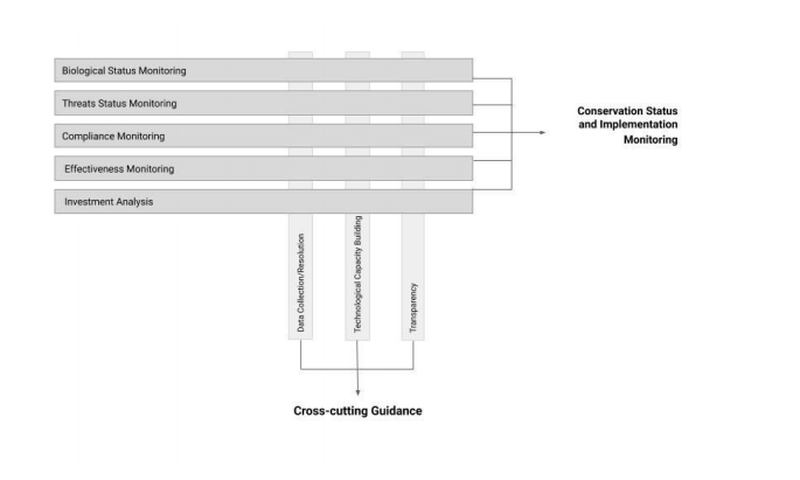

Biodiversity is deteriorating at a global level as human actions like development, overexploitation, climate change, pollution, and other factors have led to a dramatic increase in the rate of extinction. The U.S. Endangered Species Act is considered one of the strongest laws in the world for protecting wildlife, but its effectiveness depends on proper implementation. Despite the importance of ensuring such proper implementation, the agencies that implement the Act, the U.S. Fish and Wildlife Service (FWS) and the National Marine Fisheries Service (FWS and NMFS; Collectively, the Services) have no systematic monitoring policy to allow such evaluation. This lack of monitoring means the Services cannot accurately evaluate the success of recovery actions, make effective listing, delisting, and downlisting decisions, which can not only put species at risk for further decline, but also result in the misallocation of oftentimes scarce conservation funding. We posit that the absence of a monitoring policy has led to the lack of comprehensive systems to monitor and report on: a) compliance with the law, b) the effectiveness of conservation actions, or c) the state of listed species populations or the status of their threats. To help address this gap, we drafted a monitoring policy that covers (1) biological monitoring; (2) threats monitoring; (3) compliance monitoring; (4) effectiveness monitoring; and (5) investment analysis. The need for increased transparency within and outside the Services; accommodating emerging technologies; and addressing the need for detailed qualitative and quantitative data are considered in this proposal. This blueprint provides a starting point for more detailed monitoring policy and guidance that can help ensure efficient and effective implementation of the ESA and lead to better conservation outcomes for imperiled species.